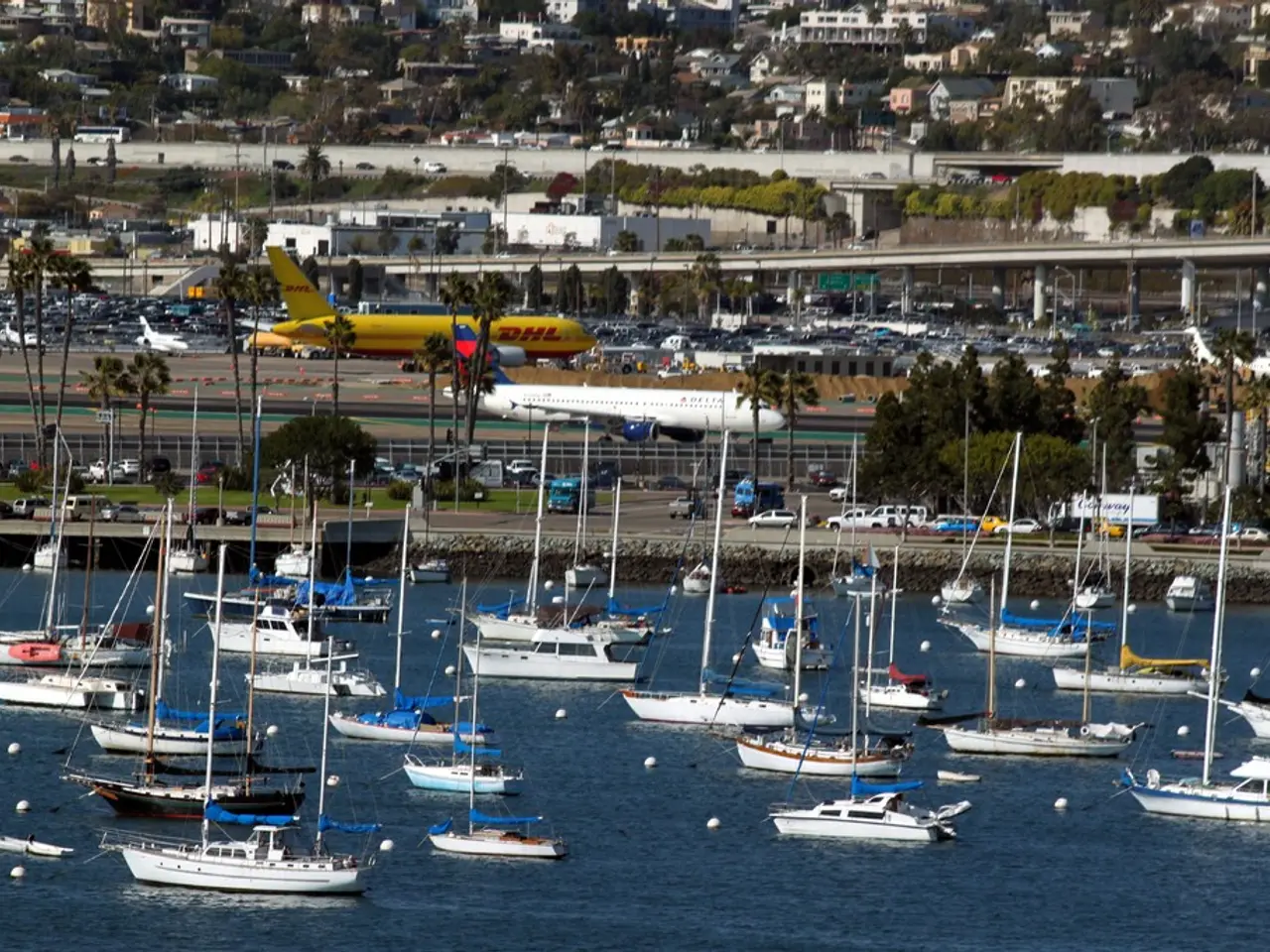Geographic Information System (GIS) Specializing in Hydrology, Emphasizing Water Resources Mapping and Analysis
The Baltic Sea, a region characterized by complex hydrographic conditions and varying water properties, has seen significant advancements in the development and use of hydrographic information, thanks to geographic information technology and the Global Positioning System (GPS).
GPS, with its ability to provide accurate positioning, has been instrumental in collecting hydrographic data such as sea surface elevations, currents, temperature, and salinity. This data is essential for safe navigation and marine operations in the Baltic Sea.
The integration of hydrographic data into Geographic Information Systems (GIS) has facilitated the visualization, analysis, and dissemination of coastal and marine data. This has enabled better coastal planning, policy development, and maritime administration in the Baltic region. Initiatives like EMODnet have compiled and classified large GIS-based datasets on coastal resilience and vulnerability, thereby supporting both navigation safety and environmental management in the Baltic Sea area.
Advances in satellite altimetry and hydrographic modeling, supported by GPS positioning, have improved the understanding of sea level gradients, currents, and water exchange processes specific to the Baltic Sea. This refined data feeds into dynamic models that can resolve smaller scale features like eddies, enhancing navigation safety and operational planning in the region.
Coordinated efforts among Baltic Sea nations and organizations, such as the International Council for the Exploration of the Sea (ICES), leverage geographic information technology for harmonized hydrographic monitoring and sharing of spatial data to inform regulations and maritime governance.
The vision is that accurate and up-to-date, high resolution geographic information will be readily available from anywhere (land, sea, air) and for any purpose. This will require completing/updating geographic data coverage on a global scale, availability of data as digital vector source data, interoperability between GI data of various sources, and networking between geographic information providers.
The development of the 'Nautical Hydrographic Information System' (NAUTHIS) by the Federal Maritime and Hydrographic Agency (BSH), Germany, is a testament to this vision. It aims to integrate their production lines for traditional paper products and electronic chart data.
The Baltic Sea Region (BSR) GIS initiative, funded by the European Union under the Baltic Sea Region Initiative, is another step towards this vision. It outlines a policy of sustainable development for the Baltic Region and launches a Baltic Region-wide GIS initiative involving the Helsinki Commission, the MAP Baltic Sea Region Project of national mapping authorities, and the University GIS Network of Upsala University.
The paper "Hydrographic GIS," written by Hecht, H., provides a comprehensive overview of the role of geographic information technology in the Baltic Sea Region. It can be found at this link: https://journals.lib.unb.ca/index.php/ihr/article/view/20499/23662.
The European Union has also studied the potential of Vessel Traffic Management and Information Services (VTMIS) to enhance maritime transport and has established a project on a VTMIS Information Network. VTMIS aims to facilitate vessel traffic management and include services distributing relevant information to actors involved.
In conclusion, GPS and geographic information technology enable precise hydrographic data acquisition, sophisticated spatial analysis, and collaborative data sharing frameworks that critically support safe navigation and administrative functions in the Baltic Sea Region's complex marine environment.
- Coastal zone management in the Baltic Sea has benefited significantly from the use of GPS and Geographic Information Systems (GIS), which facilitate the analysis and dissemination of marine data, leading to better planning and policy development.
- The integration of hydrographic data into GIS, combined with advancements in satellite altimetry and hydrographic modeling, contributes to improved understanding of sea level gradients, currents, and water exchange processes, enhancing navigation safety and operational planning in the region.
- Environmental management in the Baltic Sea is also supported by initiatives like EMODnet, which compile and classify large GIS-based datasets on coastal resilience and vulnerability, providing essential information for environmental-science research and decision-making.
- Technology plays a pivotal role in the development and use of hydrographic information, with the vision of having accurate and up-to-date, high-resolution geographic information readily available from any location, which would require advancements in data-and-cloud-computing, the development of gadgets for data collection, and the establishment of networking between geographic information providers.




